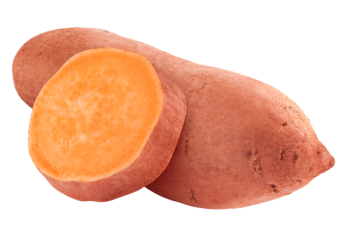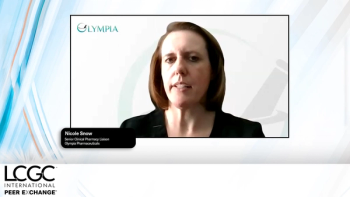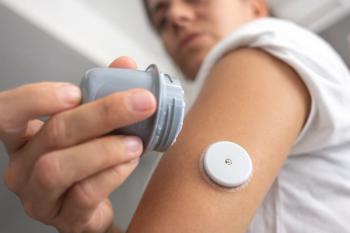
- LCGC North America-05-01-2019
- Volume 37
- Issue 5
Development of Fully Automated Bubble-in-Drop Microextraction–Gas Chromatography–Mass Spectrometry of Organochlorine Pesticides in Environmental Waters
By optimizing and fully automating the bubble-in-drop microextraction process, this sample preparation technique, combined with gas chromatography–mass spectrometry (GC–MS) analysis, provides high precision and good figures of merit, as shown for selected organochlorine pesticides in the analysis of tap water and reservoir water samples.
In this study, the intentional incorporation of an air bubble into a solvent droplet is proposed for fully automated bubble-in-drop microextraction–gas chromatography–mass spectrometric (BID-GC–MS) analysis of selected organochlorine pesticides as model analytes. By using a commercial autosampler coupled to a GC–MS system, all experiments could be performed sequentially and automatically, without any human intervention. By applying orthogonal array design, optimization of the extraction procedure was performed with a minimum number of experiments. The automated procedures presented the advantage of high precision (5.8%–7.7%) and good figures of merit. Using the optimized BID parameters, enrichment factors were determined to be between 23 and 326 for α–hexachlorocyclohexane, dichlorodiphenyldichloroethane, and dieldrin. Limits of detection ranging from 1.74 µg/L to 2.51 µg/L were obtained. Fully automated BID-GC–MS was successfully applied to the analysis of tap water and reservoir water samples.
Over the years, interest in developing fast, convenient, and sensitive analytical methods has been on the rise. Much of the effort has been on the development of sample preparation procedures, a critical stage in an analytical method (1). Such a step is required for extraction and, of course, analyte enrichment. Another reason for sample preparation is clean-up (or matrix minimization, if not matrix elimination). One of the oldest preconcentration and matrix isolation techniques in analytical chemistry is liquid–liquid extraction (LLE). Conventional LLE uses large amounts (several hundred milliliters) of extractant solvents, which are expensive, and often hazardous. The procedure is time-consuming, and tedious. Moreover, appreciable amounts of waste solvents are generated. In short, LLE is not a very environmentally friendly procedure. In attempts to lessen the ecological impact of LLE, there have been many studies emphasizing the miniaturization of LLE, specifically to reduce solvent use. Liquid–liquid microextraction (LLME) is the miniaturized alternative to LLE and was introduced by Murray in 1979 (2); the procedure was conducted in a flask with a capillary tube and a side arm. Subsequently, Jeannot and Cantwell reported solvent microextraction in which a low microliter volume amount of solvent (compared to several hundred microliters in LLME) was used for extraction (3); this eventually became known as singe-drop microextraction (SDME). In 1997, He and Lee reported a concept to perform LLME in a simple apparatus or device (in this case, the commonly used microsyringe) which served as a microseparatory funnel for extraction, before the extract was injected, using the same device, into a gas chromatograph for analysis (4). The technique was termed liquid-phase microextraction (LPME), which is now a generic term to represent all solvent-based microextraction procedures. This LPME approach successfully paved the way for its full automation, with the use of a commercial autosampler and software (5).
SDME is useful in trace analysis, but the method has notable shortfalls. Droplet instability is always a potential problem. Additionally, volatilization of the organic solvent, especially at relatively high ambient temperatures, may cause the formation of bubbles in the droplet, which is undesirable. However, Williams and associates purposely incorporated an air bubble within the droplet in SDME, with interesting results (6). The enrichment factors of the experiment with a bubble in the droplet were reportedly higher than those of the same experiment with no bubble. This was due to the higher surface area of the solvent in contact with the sample, in comparison to the solvent drop without a bubble, resulting in greater extraction efficiency. Although SDME, and its bubble-in-drop variant, are simple to use and operate, it would be beneficial if the entire procedure could be automated, as has been reported (7,8). This has the great implication that human manipulation, and therefore error, are kept to an absolute minimum when dealing with such small (µL) volumes of extraction solvent.
In the present work, a fully automated bubble-in-drop (BID) microextraction approach coupled to gas chromatography–mass spectrometry (GC–MS) for the analysis of three organochlorine pesticides (OCPs), (α–hexachlorocyclohexane (HCH), dichlorodiphenyldichloroethane (DDD), and dieldrin (DID) as model analytes in water samples, was developed and evaluated. Because optimization of microextraction procedures, including LPME, involves the consideration of several parameters, as well as the interactions amongst them, orthogonal array design (OAD) (9–11) was applied to streamline the process, and to reduce the number of experiments needed to arrive at the set of the most favorable extraction conditions (see, for example, a recent OAD application for automated dispersive liquid–liquid microextraction [12]). The present preliminary study constitutes the first application of OAD-optimized fully automated BID, seamlessly integrated with GC–MS analysis.
Experimental
Materials and Reagents
HCH, DDD, and DID, dissolved in methanol, at concentrations of 10 µg/mL, were purchased from SPEX (Metuchen, New Jersey, USA). All the extraction solvents used were of HPLC-grade. Cyclohexane was purchased from Emsure (Darmstadt, Germany). Isooctane and toluene were obtained from Tedia (Fairfield, Ohio, United States). Dichloromethane was purchased from MSR (P.P. Chemicals, Kulai, Johor, Malaysia). Analytical-grade acetone and HPLC-grade methanol were also obtained from MSR. Sodium chloride was obtained from GCE (Chula Vista, California, USA). Nanopure water was produced using an Elga Purelab Option-Q water purification system (Marlow, Buckinghamshire, United Kingdom).
Aqueous working solutions were prepared daily by spiking of the stock solution into ultrapure water.
Automated BID Procedure
All the following steps, including rinsing of syringe, introduction of extraction solvent into the microsyringe, incorporation of an air bubble, and withdrawal of the final extract for injection into the GC injector, were performed automatically on a CTC Analytics CombiPAL autosampler and its Cycle Composer software (Zwingen, Switzerland). Instructions to handle the automated operations were written using the macro-editor of the software. To perform BID, the software was programmed so that 2 µL of the organic solvent was withdrawn into a 10-µL microsyringe, followed by withdrawal of 1 µL of air into the solvent droplet. The needle of the microsyringe was then set to penetrate 29 mm into a 2-mL GC vial with a polytetrafluoroethyelene septum containing an aqueous solution (1.0 mL) of the OCPs. A penetration depth of 29 mm ensured that the needle tip was below the surface of the aqueous solution. The solvent (and bubble) were slowly exposed to the aqueous solution to form a droplet suspended at the tip of the needle, until all the solvent had been pushed out from the microsyringe barrel. After a 35-min extraction time, the solvent droplet was retracted back into the microsyringe barrel (together with the air bubble, which provided the added benefit of a clearly visible boundary between the organic solvent and the aqueous solution), and then injected into the GC injector port. The microsyringe was rinsed with acetone by repeatedly drawing and dispensing it (3x) into a waste reservoir, with a final rinsing (2x) with the extraction solvent to prevent carryover, before the next BID experiment.
GC–MS Analysis
Analysis was carried out using a Shimadzu QP2010 GC–MS system (Kyoto, Japan) and a DB-5MS fused silica capillary column (30-m length × 0.25-mm internal diameter, 0.25-µm film thickness) from J&W Scientific (Folsom, California, USA). High purity (99.999%) helium was used as the carrier gas at a flow rate of 1.67 mL/min. The injector temperature was kept at 280 °C, and operated in the splitless mode. The MS system was operated in the electron impact ionization mode, and the interface temperature was set at 280 °C. The GC temperature program was as follows: initial temperature 80 °C, held for 1 min; increased by 20 °C/min to 240 °C, held for 4 min. A mass range of m/z 170–250 was scanned to obtain the fragmentation spectra of the analytes, and selective ion monitoring (SIM) mode was performed for quantification. Detection was achieved in SIM mode, with a solvent delay time of 8 min.
OAD Optimization and Investigation of Interactions Between Variables (6–10)
Five main parameters, including the effect of salt addition (salting-out effect), type of extraction solvent, volume of air bubble, volume of extraction solvent, and length of extraction time, were considered for OAD. Because the type of extraction solvent is a qualitative factor, a four-level setting was considered. Additionally, the four remaining factors were quantitative factors, hence two-level settings were considered. Therefore, a mixed level OAD with an OA16 (41 × 212) matrix was chosen for the optimization process, because it allowed the effect of the five main parameters and possible interactions to be considered simultaneously, with the least number of experiments.
By choosing a mixed-level OA16 (41 × 212) matrix, the main variables together with their interactions can be simultaneously examined by 16 experimental trials. The main variables included the choice of organic extraction solvent, bubble size, extraction solvent volume, extraction time, and salt concentration of the sample solution. Three selected interactions were also investigated. Being a qualitative variable, the choice of organic acceptor solvent was considered at a four-level setting, whereas the rest of the quantitative variables were set at two-level settings, as shown in Table I. As one column was assigned as a dummy factor, no repetition for the same experimental trial was necessary because the error variance could be calculated from the dummy factor (10).
The responses (enrichment factors) from the array were calculated, and are tabulated in Table II. Data analysis was carried out according to the equations and methods given for data analysis strategy employing analysis of variance (ANOVA) and percentage contribution techniques (10). The average response of each factor was calculated (rx) for each of the chosen levels. ANOVA results are shown in Table III. The results showed that the choice of organic acceptor solvent (A) was the most significant variable followed by the extraction solvent time (C). For the first time, it was shown that the interaction between the type of extracting solvent and bubble size (A × B) and that between the type of extracting solvent and the extraction solvent volume (A × C) were also significant.
The effects of the bubble size (B), extraction time (D), salt concentration (E), and the interaction between bubble size and extraction solvent volume (B × C) were negligible. However, the main variable bubble size (factor B) had to be considered at a higher level array, because the interaction (A × B) was shown to be important. The percentage contribution coming from the error (uncontrollable or unknown factors), which was computed from the dummy factor, was as low as 0.07%. This implies that there are no other essential factors or interactions which are left out in the initial stage of the array design. Hence, the rest of the interactions between the factors could be disregarded in this study. The optimal extraction conditions are shown as the highest average response for each factor. For example, for factor A, r1 displays an average response of 61 (underlined in Table II, second column). This means that toluene is most likely the optimal extraction solvent to use. However, these are preliminary results and further investigation is deemed necessary.
According to the initial results, a three-level OA27 (313) array (Table IV) was chosen for a more comprehensive optimization of the variables affecting the fully automated BID procedure.
Experimental results of the three-level array are presented in Table V. Although toluene gave the best response in the mixed-level array, the best three of the four organic solvents were selected for the three-level array to study the significant interactions (A × B) and (B × C) more thoroughly. Table VI shows the ANOVA results for the three-level array. Similarly, the error in the ANOVA table was pooled from the dummy factors. The effects of the variables on the response function can be evaluated by both their significance (F ratio) and their percentage contribution (PC%). The F-test indicated that the organic extraction solvent (A) was statistically significant at P < 0.001. Bubble size (B), extraction solvent volume (C) and extraction time (D) were statistically significant at P < 0.05. The results were further confirmed by the analysis of PC%, which indicates how important each variable or interaction is amongst the rest of the considered factors (11). The results pertaining to the importance of the variables and interactions were in accord with those of the mixed-level array. A low error of 7.55% was also obtained.
From the analysis of the mixed-level OA16 (41 × 212) and three-level OA27 (313) arrays, interactions (A × B) were statistically significant, as discussed in detail previously. In this case, because the interaction (A × B) contained a non-significant variable (B), the optimum level for the non-significant factor must be decided based on the interactions. This can be evaluated by considering a three-by-three table for each interaction, which had been described in detail for a similar situation (9). The computed results for (A × B) interactions are listed in Table VII.
It can be seen from Table VII that the combination of A1 (toluene) and B2 (1.0 µL) gives the best enrichment factor. Therefore, based on the OAD experiments, the optimized extraction conditions were 1.0 µL of air incorporated with 2.5 µL of toluene as the extraction solvent, an extraction time of 35 min, and with no salt added.
It should be noted that, since the OAD strategy required multiple experiments, it provided the perfect opportunity in this work to demonstrate the automation of a BID-GC–MS sequence over many cycles, without any operator intervention, to generate the optimization data.
Results and Discussion
OAD Optimization Results
According to the results from the mixed-level OAD, the type of extraction solvent was the most significant variable, followed by volume of the solvent, and the ionic strength (added salt) of the sample solution. It was also shown that the interaction between the type of extraction solvent and bubble size and the interaction between the type of solvent and the solvent volume were also significant. A three-level OA27 (313) array was then chosen to study the effects of these significant variables and interactions at more specific levels for a more comprehensive optimization of automated BID.
The responses (enrichment factors, taken to represent BID efficiency) from the array were calculated according to the following equation:
Enrichment factor (EF) = Ca,final / Cs,initial
where Ca,final is the final concentration of analyte in the extract phase, and Cs,initial is the initial analyte concentration in the sample.
Based on the OAD experiments, the final optimized extraction conditions were 1.0 µL of air incorporated with 2.5 µL of toluene as the extraction solvent, an extraction time of 35 min, and with no salt added.
BID-GC–MS Performance
Evaluation of the method's linearity, sensitivity, and precision was carried out under the optimized conditions, and the results are shown in Table VIII. The analytes exhibited good linearity, with superior coefficients of determination (r2) of between 0.9987 and 0.9991. The precision of the method was determined by performing six consecutive fully automated extractions from aqueous samples spiked with 0.05 µg/mL of each OCP. The relative standard deviations (RSDs) of the analyte responses obtained were between 5.8% and 7.7%. The EFs obtained for the three OCPs were between 23 and 326, which demonstrate effective enrichment of the target analytes. Limits of detection (LODs), calculated at a signal-to-noise (S/N) ratio of 3, ranged between 1.74 and 2.51 µg/L.
Comparison of SDME with BID
To support the hypothesis that the deliberate inclusion of air bubble in the microdroplet could lead to the increase in extraction efficiency, replicate SDME experiments of 0.05 µg/mL sample solution, using the same conditions and parameters (with the exception of bubble size, which was changed to 0 µL), were carried out. The enrichment factors (EFs) obtained are shown in Table VIII. The EFs for HCH, DID, and DDD were 232, 19, and 28, respectively, compared to 326, 23, and 39 achieved using BID-SDME. Thus, it is possible that the increase in the extraction efficiencies for OCPs were related to the increase in interfacial area of the organic drop, given that all other factors were kept the same.
Real Sample Analysis
The applicability of the proposed fully automated method to a real environmental aqueous matrices was evaluated using tap water and reservoir water samples. The unprocessed water samples were first extracted under the optimized conditions, and analyzed. No target analytes were detected, or their concentrations were below the LODs. This is not surprising, because these OCPs have not been used in Singapore since the 1970s. Nevertheless, each OCP was spiked at 50 µg/L concentrations into the samples, and the latter extracted and analyzed using the method developed. The relative recoveries (RRs) (defined as the ratio of the concentration of analytes from spiked real sample extracts to that from spiked ultrapure water extracts) were calculated to evaluate matrix effects. Results of the RRs and RSDs of spiked tap water and reservoir water samples (Table IX) demonstrated that satisfactory RRs (69%–96%) were attained; the RSDs ranged from 4.3% to 10.0%, which are considered very good (the lowest RR and highest RSD values were for the relatively more complex reservoir samples, which is not surprising). The generally good results can be attributed to the full automation of the procedure; overall, the data showed that the matrices had only minor effects on the method. The fully automated BID-GC–MS approach was demonstrated to be viable for quantitative determination of OCPs in real environmental water samples.
Conclusion
Fully automated bubble-in-drop microextraction was set up in this work to address the shortcomings and inconvenience of previously reported manual approaches of this procedure. With the simplicity of operations and handling enabled by automation, including the implementation of orthogonal array design optimization, the sample preparation procedure could be carried out easily, and sequential extractions could be performed conveniently using a commercially available autosampler. There was less error than that associated with manual injection, and significant reduction in labor intensiveness, allowing good analytical performance of the procedure for the determination of several representative organochlorine pesticides. However, this is only a preliminary study, and more work is needed to improve analytical performance, particularly in terms of the limits of detection.
References
(1) M. Smith, J. Chromatogr. A 1000, 3–27 (2003).
(2) D.A.J. Murray, J. Chromatogr. A 177, 135–140 (1979).
(3) M.A. Jeannot and F.F. Cantwell, Anal. Chem. 68, 2236–2240 (1996).
(4) Y. He and H.K. Lee, Anal. Chem. 69, 4634–4640 (1997).
(5) J. Lee and H.K. Lee, Anal. Chem. 83, 6856–6861 (2011).
(6) D.B.G. Williams, M.J. George, R. Meyer and L. Marjanovic, Anal. Chem. 83, 6713–6716 (2011).
(7) D.C. Wood, J.M. Miller and I. Christ, LCGC Asia Pacific 7, 8–11 (2004)
(8) L. Guo, N. binte Nawi and H.K. Lee, Anal. Chem. 88, 8409–8414 (2016).
(9) W.G. Lan, M.K. Wong, N. Chen and Y.M. Sin, Analyst 119, 1659–1667 (1994).
(10) W.G. Lan, K.K. Chee, M..K. Wong, H.K. Lee and Y.M. Sin, Analyst 120, 281–287 (1995).
(11) W.G. Lan, M.K. Wong, N. Chen and Y.M. Sin, Analyst 120, 1115–1124 (1995).
(12) L. Guo and H.K. Lee, Anal. Chem. 86, 3743–3749 (2014).
Claire A. Taylor, Hui Min Lee, and Hian Kee Lee are with the Department of Chemistry at the National University of Singapore. Direct correspondence to H.K. Lee at:
Articles in this issue
over 6 years ago
Vol 37 No 5 LCGC North America May 2019 Regular Issue PDFover 6 years ago
Method from Mars? Coping with Chromatographic Legaciesover 6 years ago
Modern Mobile Phase Design for HPLCover 6 years ago
New Gas Chromatography Products for 2018–2019over 6 years ago
New Sample Preparation Products and Accessories (2020)over 6 years ago
Data Integrity Focus, Part V: How Can USP Help Data Integrity?Newsletter
Join the global community of analytical scientists who trust LCGC for insights on the latest techniques, trends, and expert solutions in chromatography.





